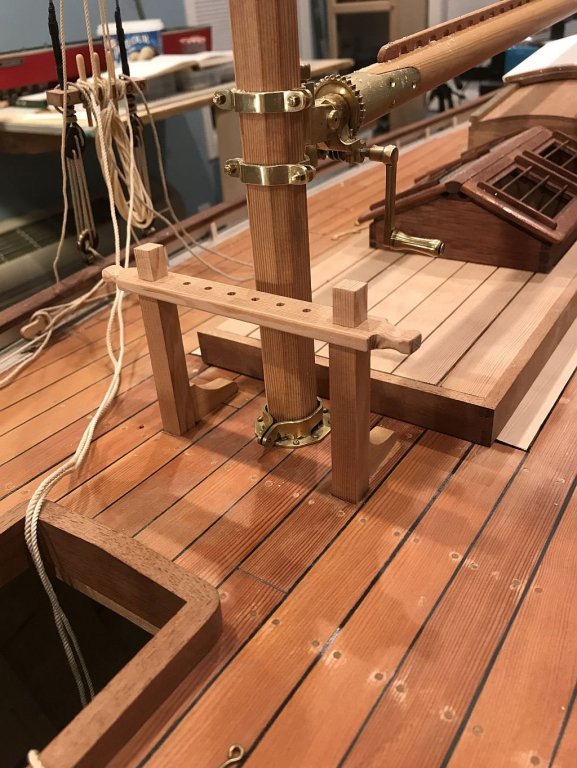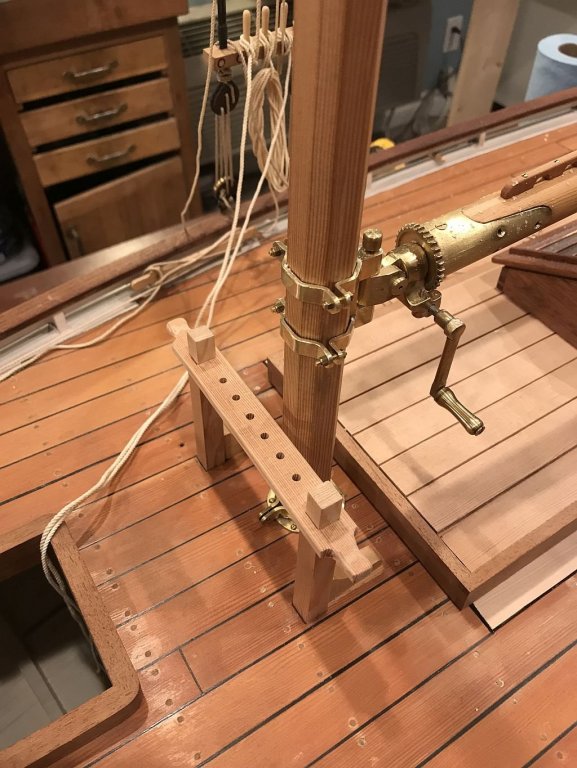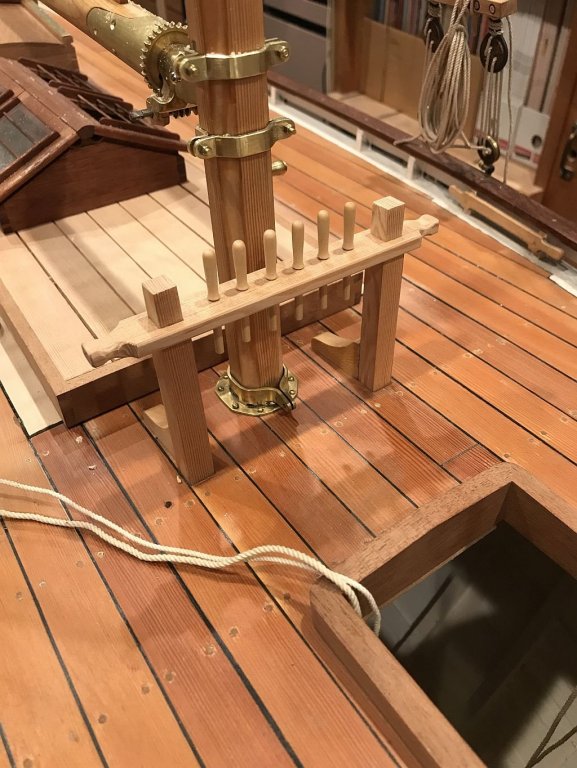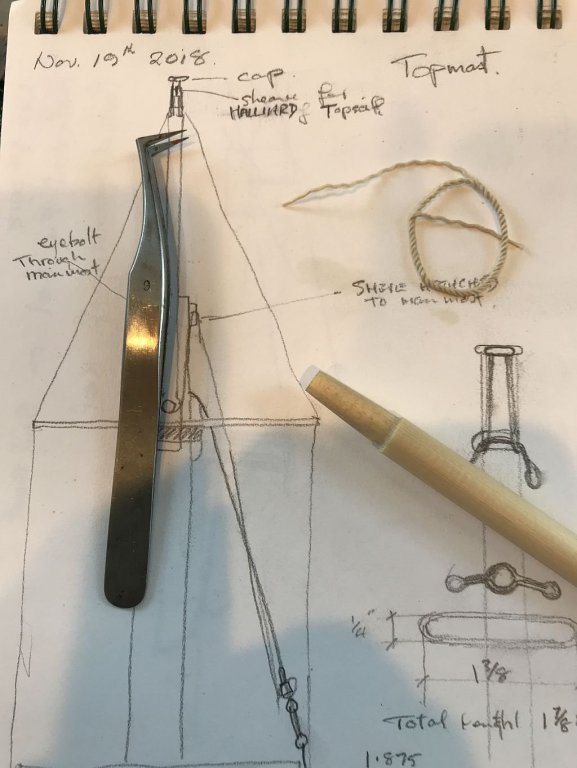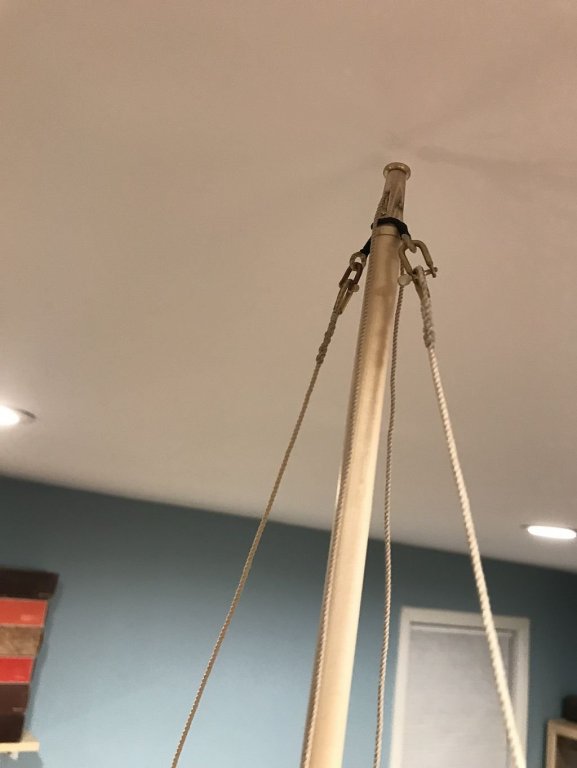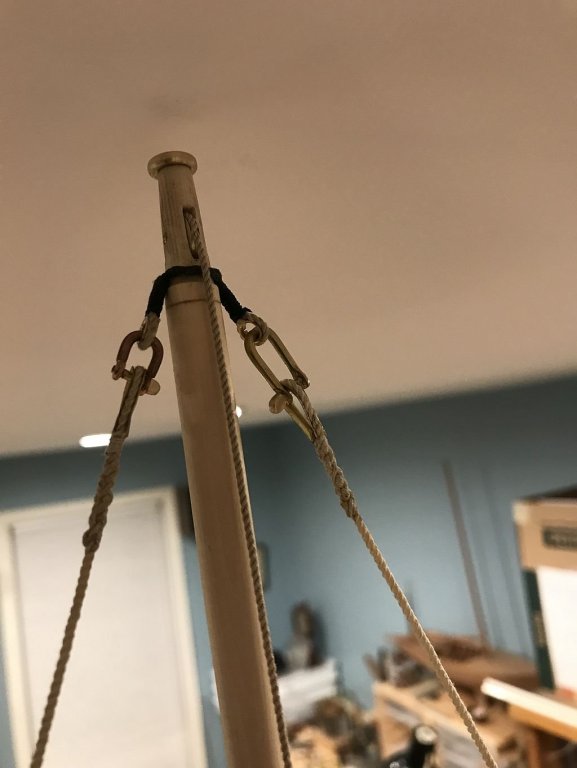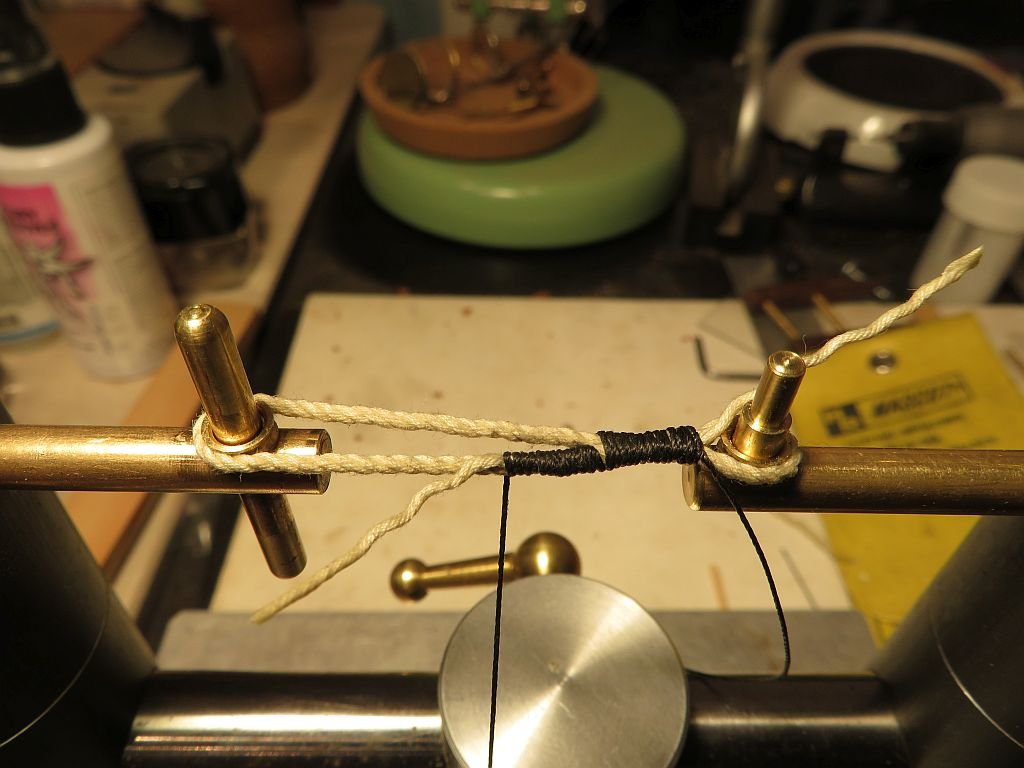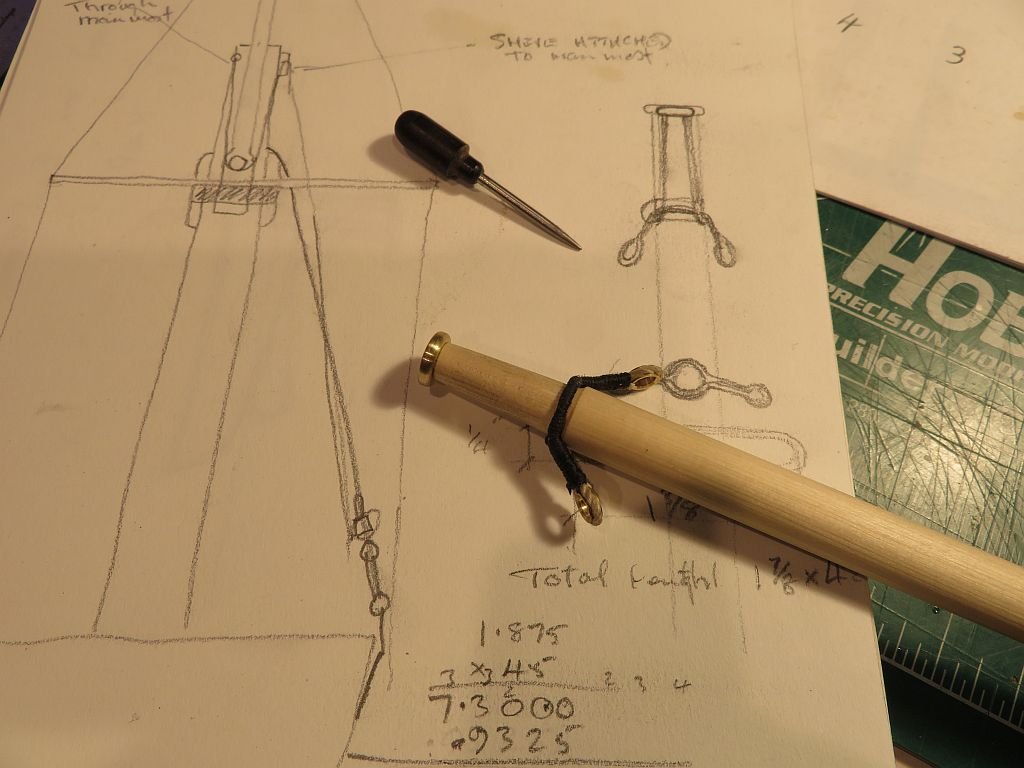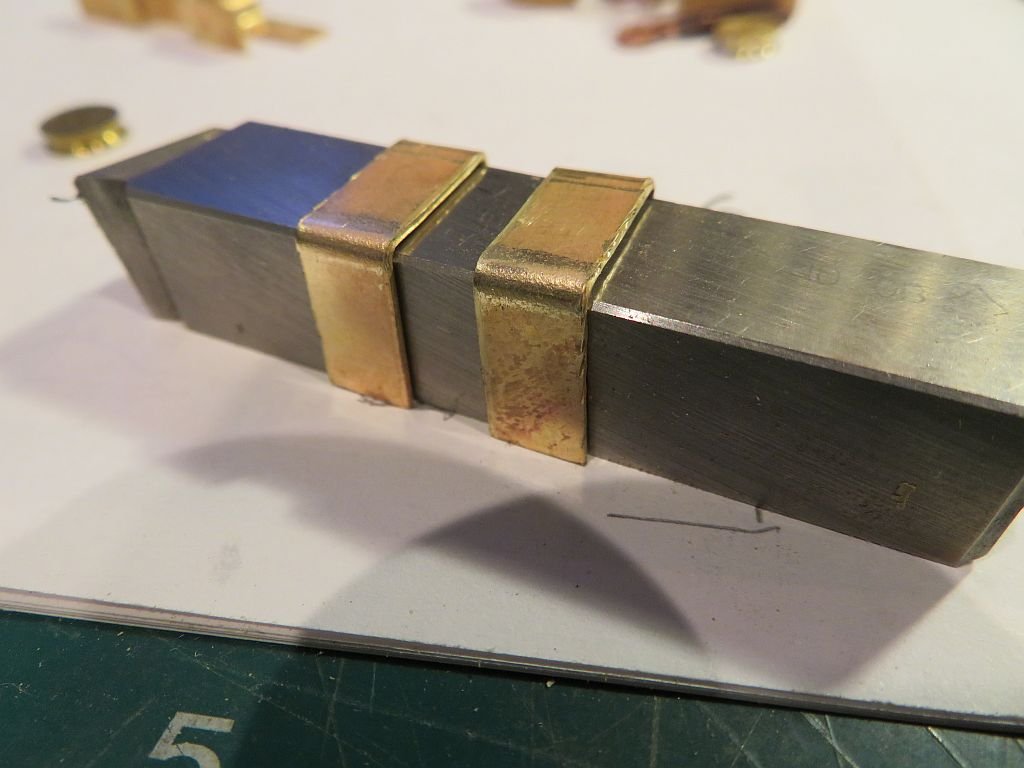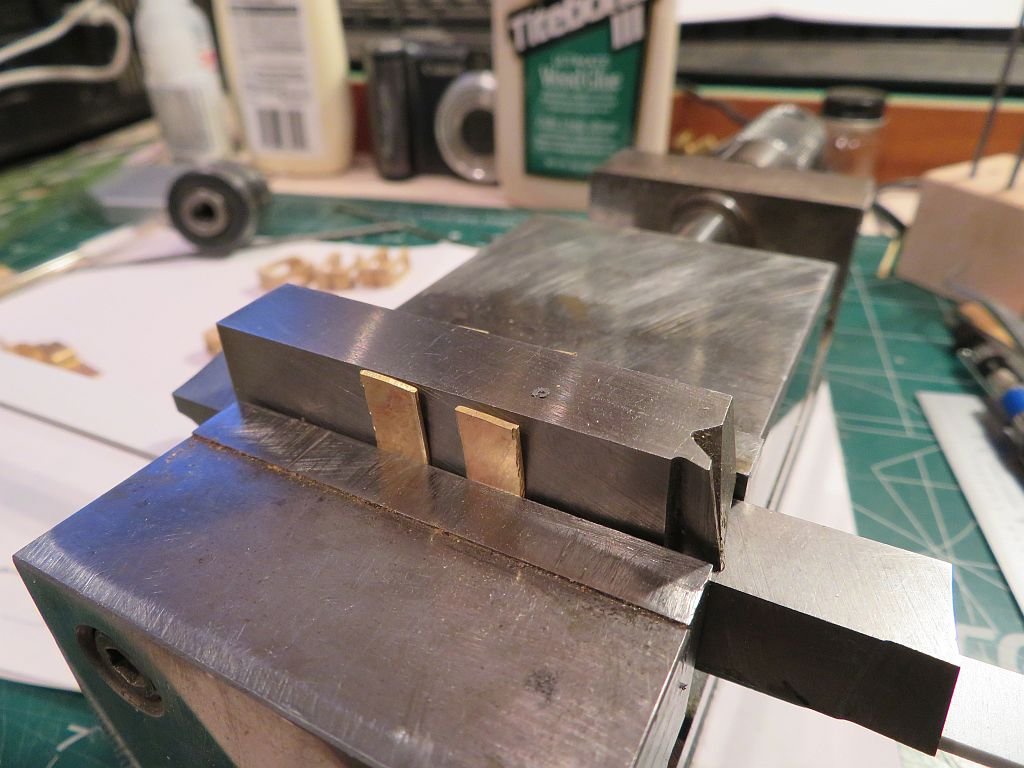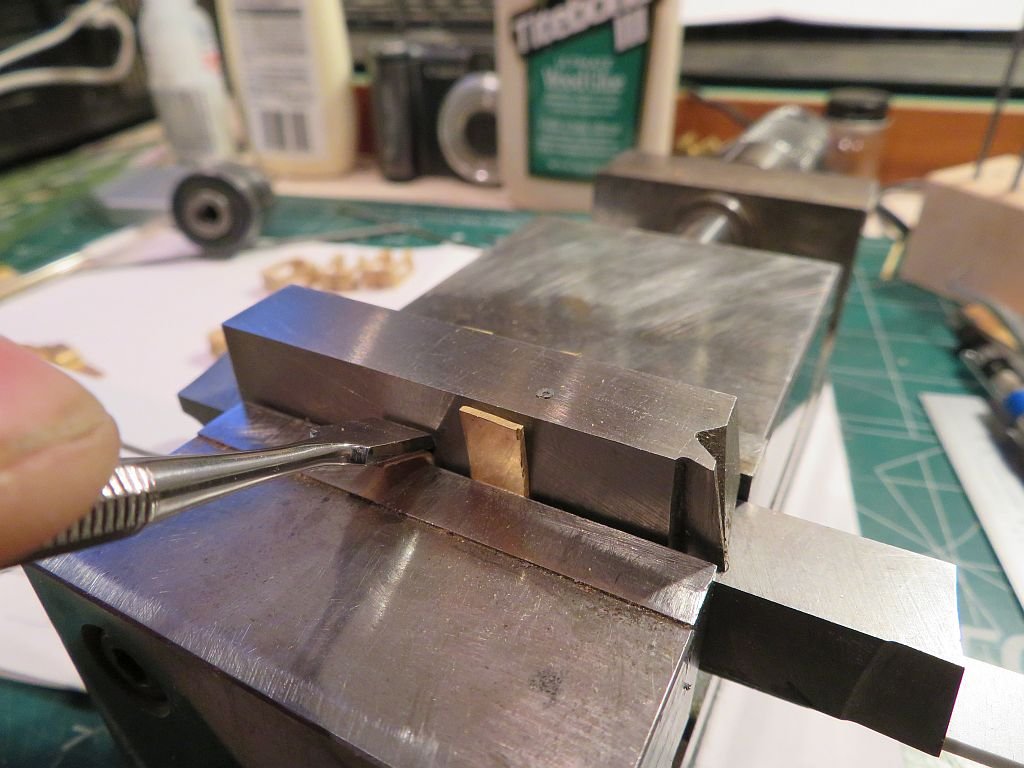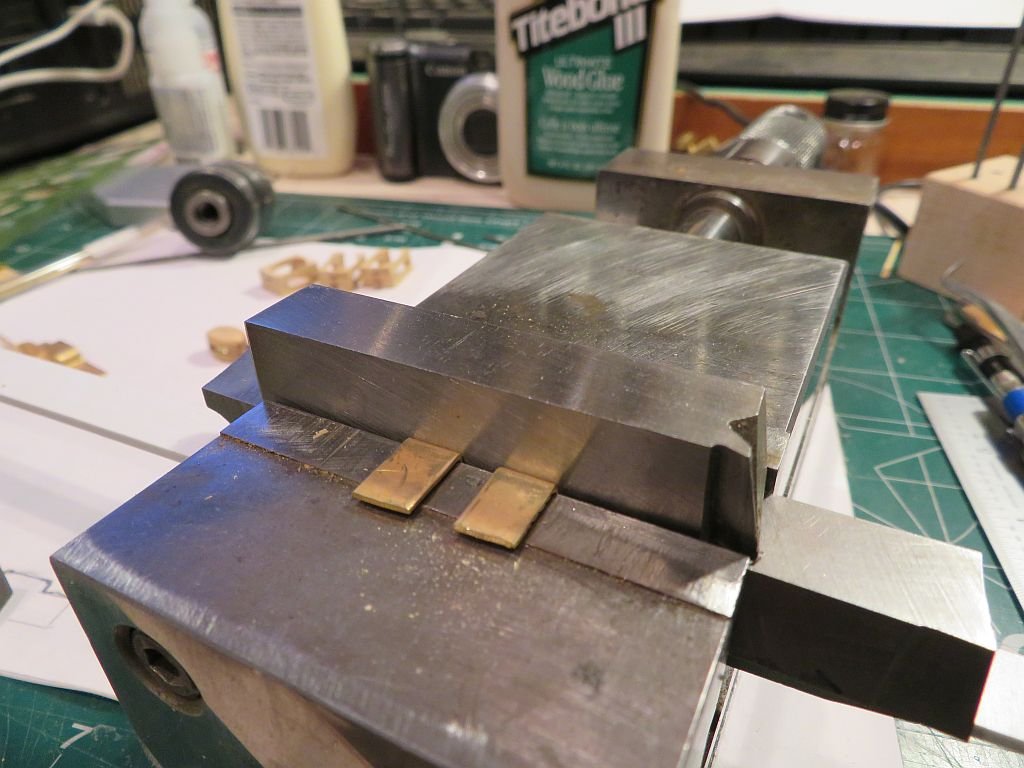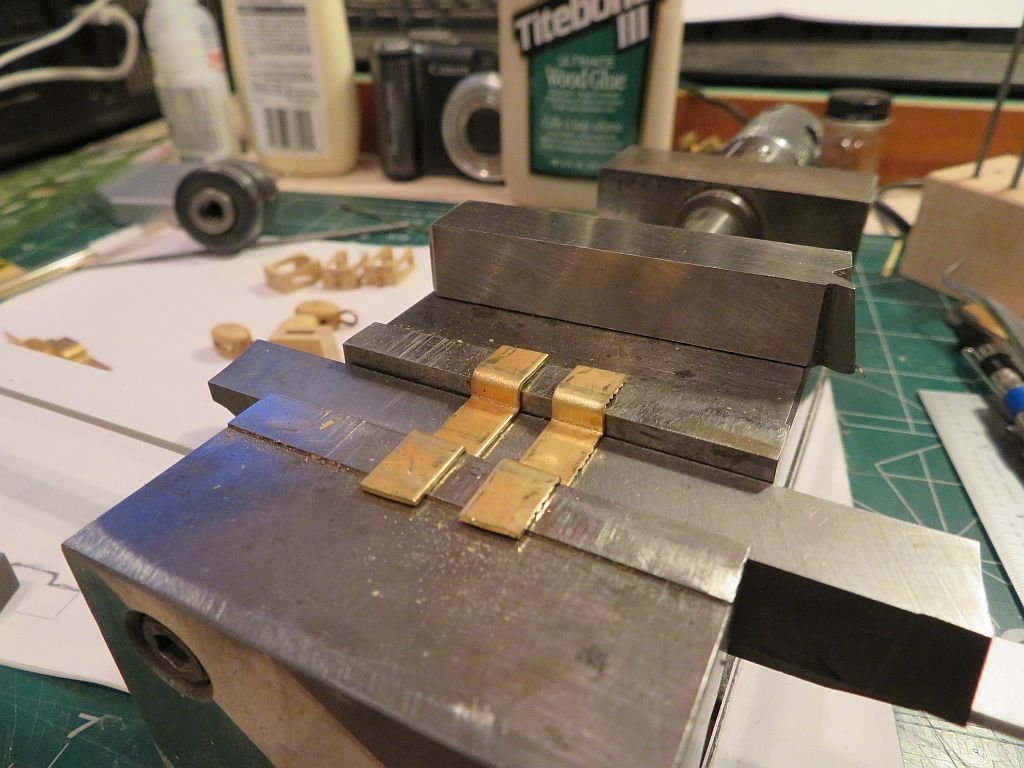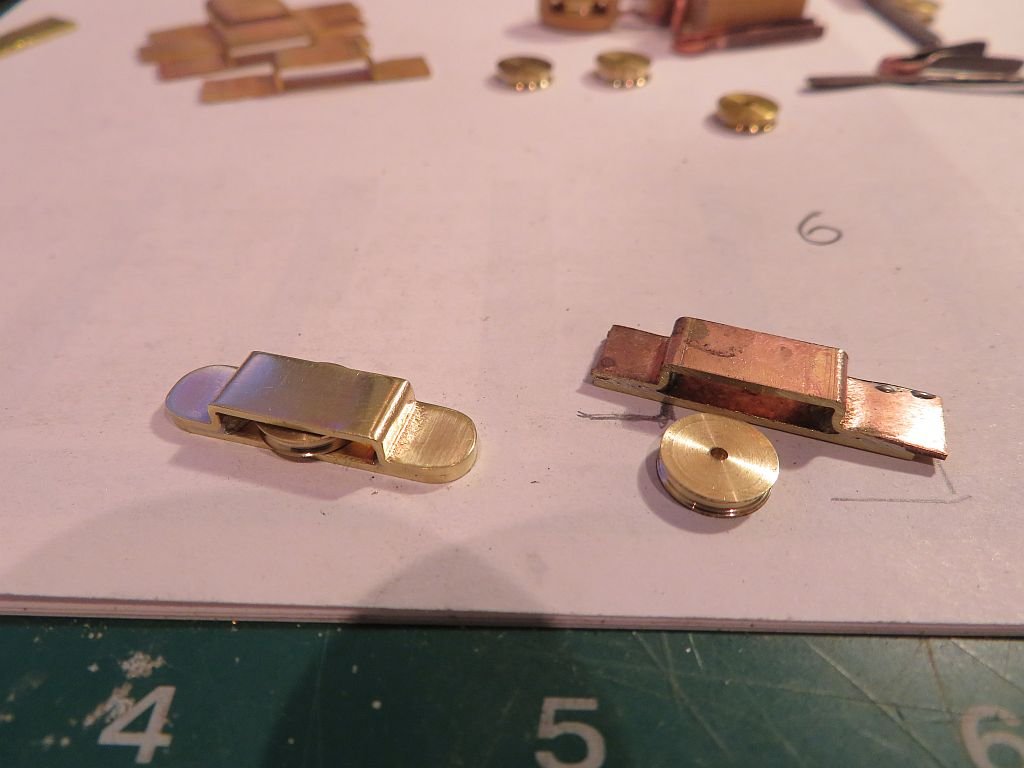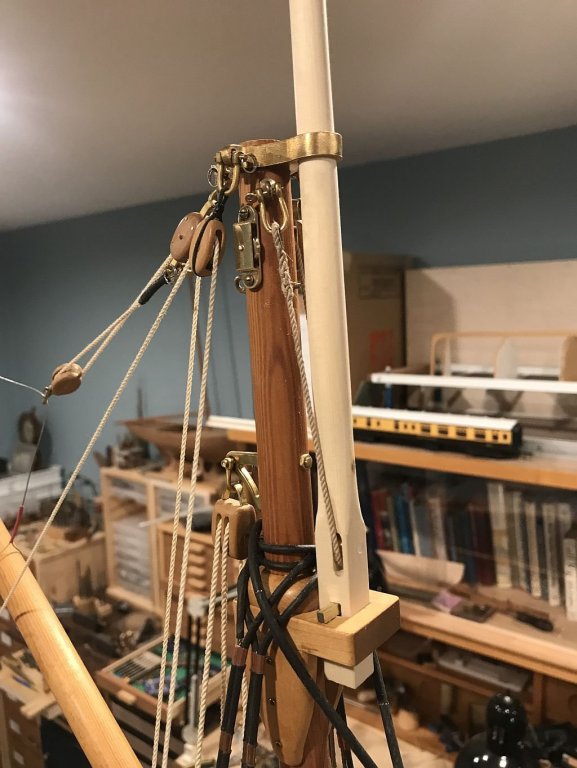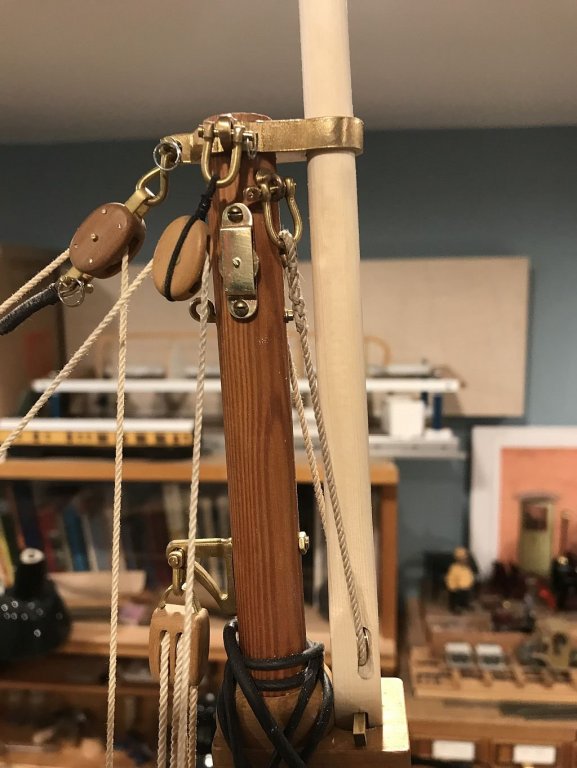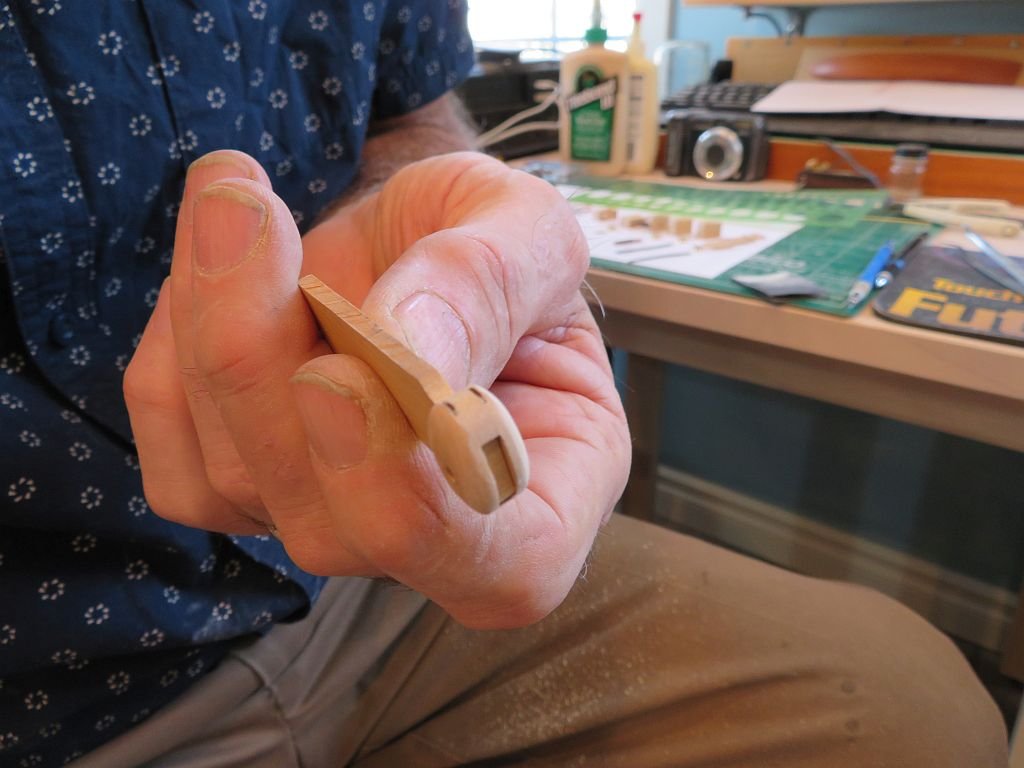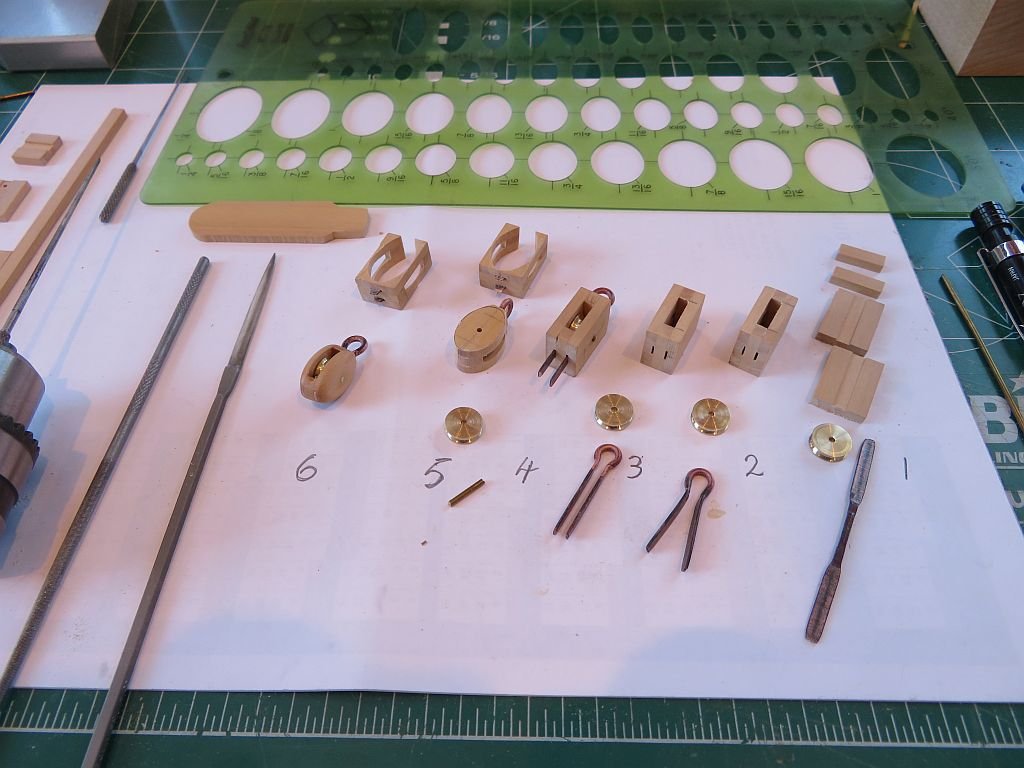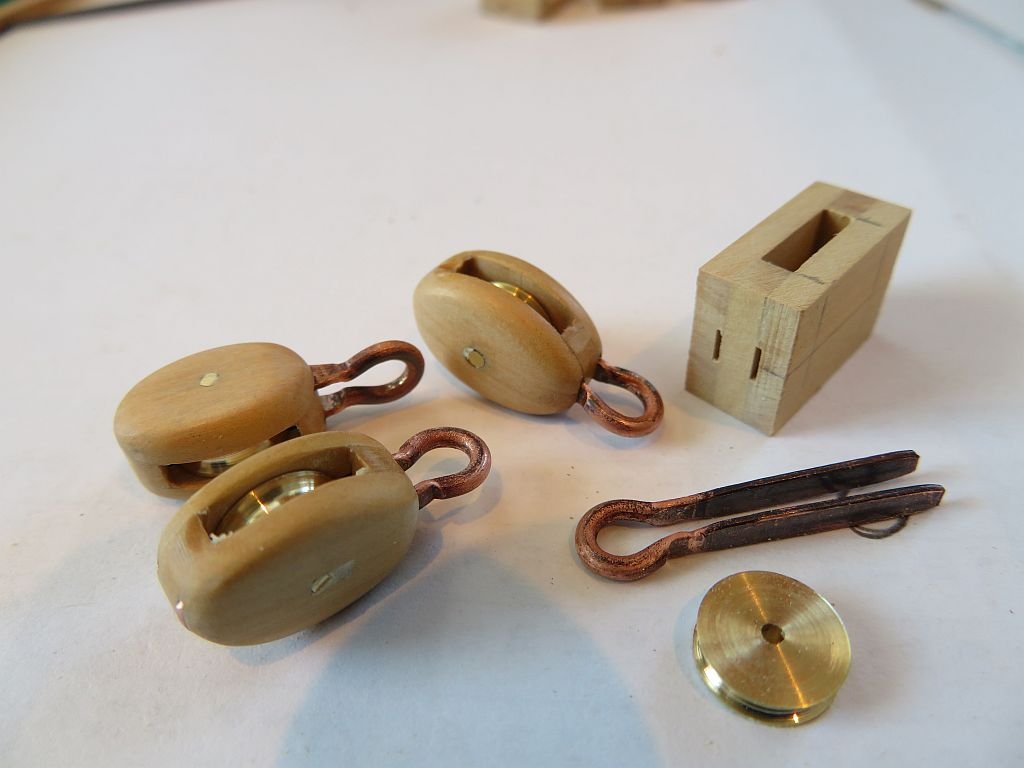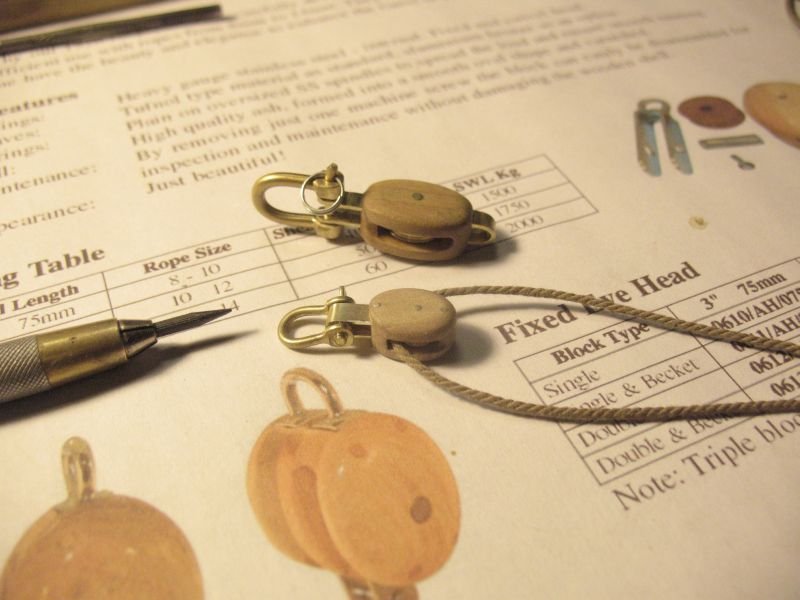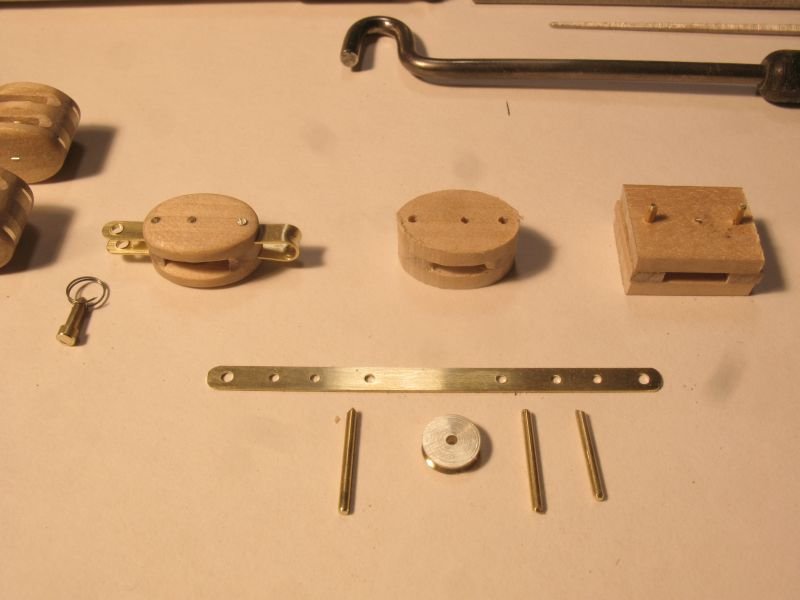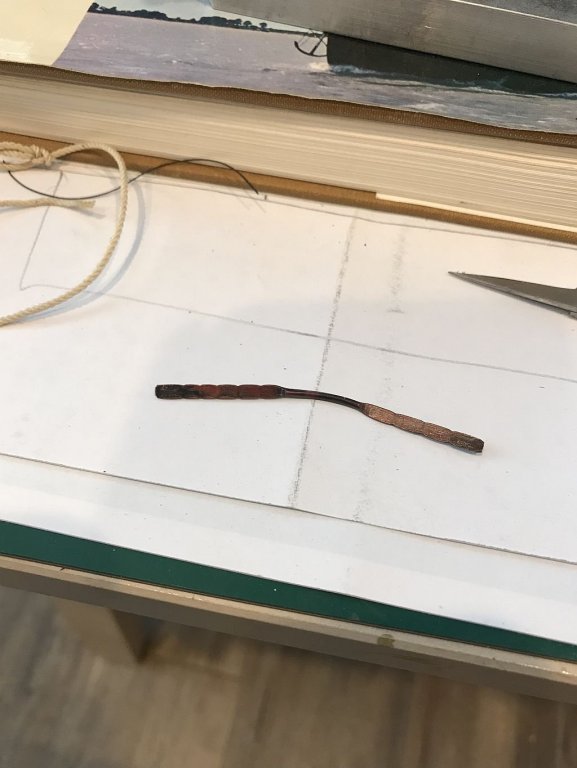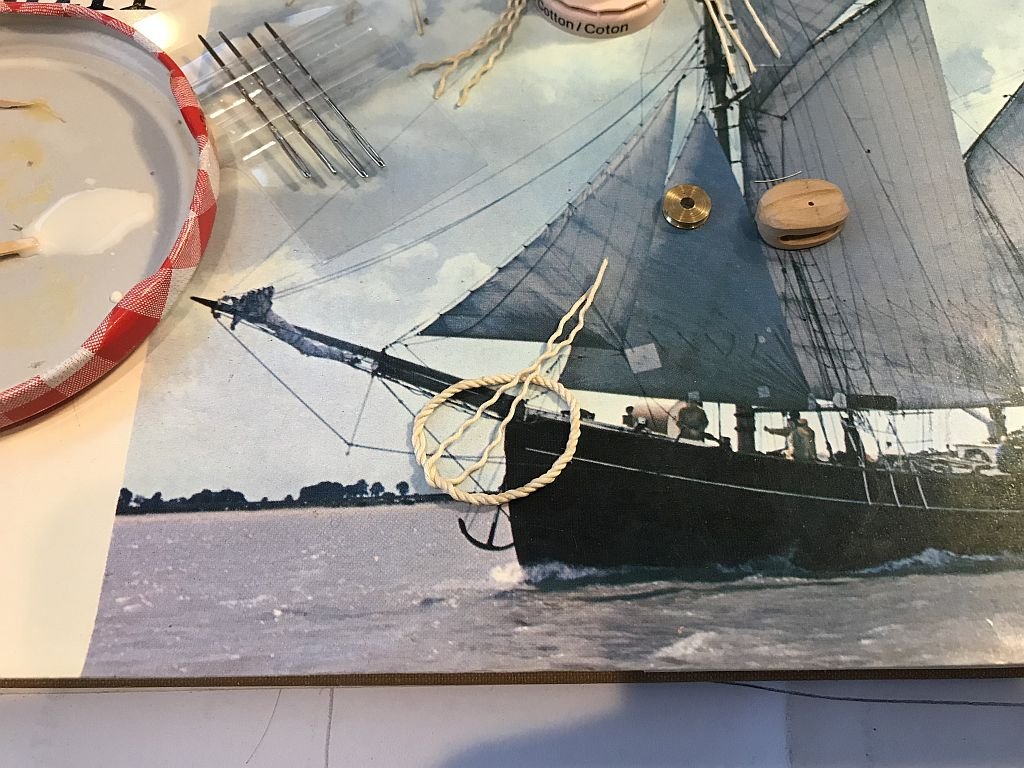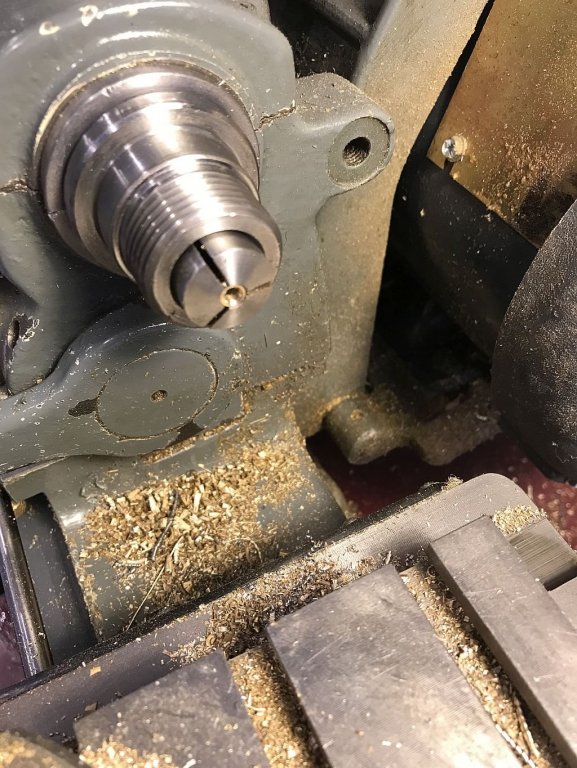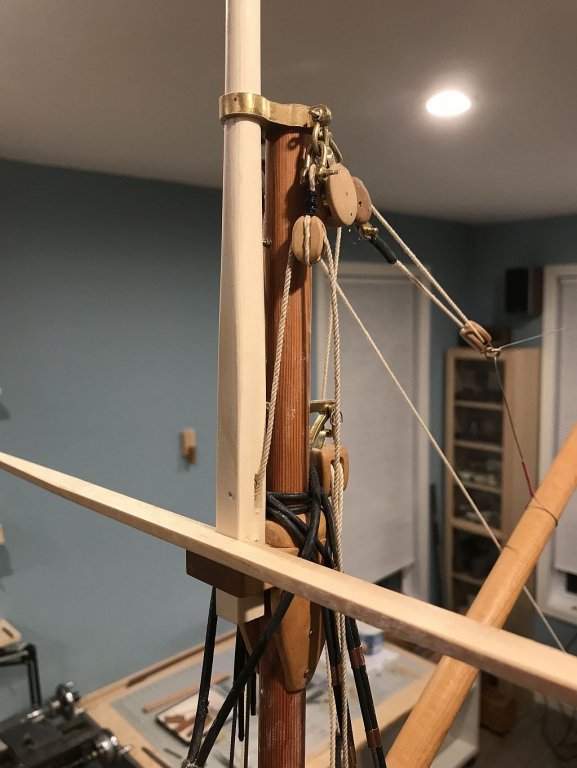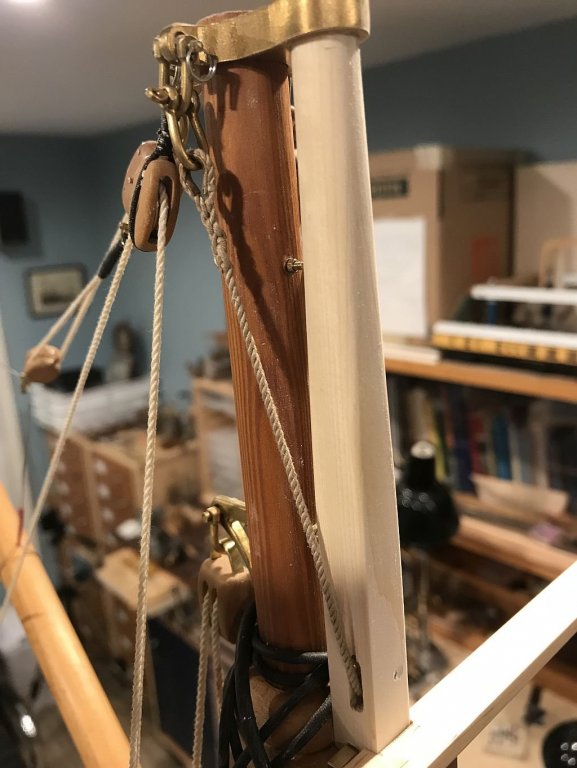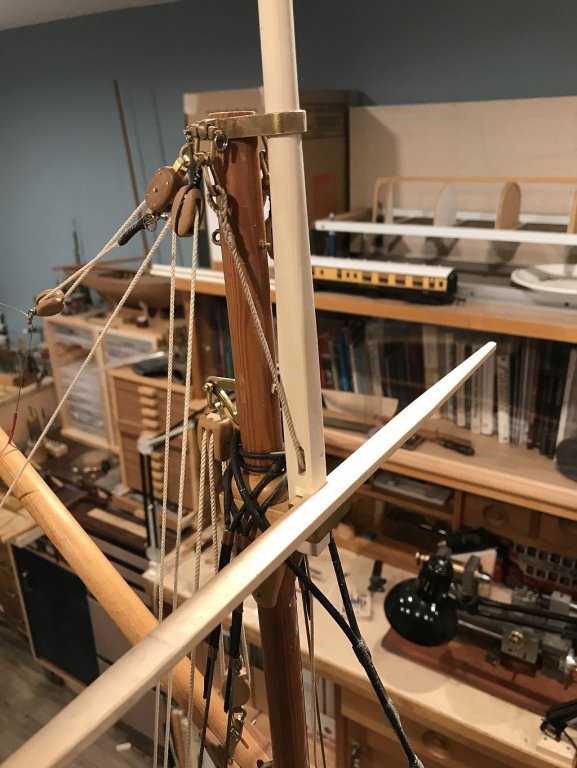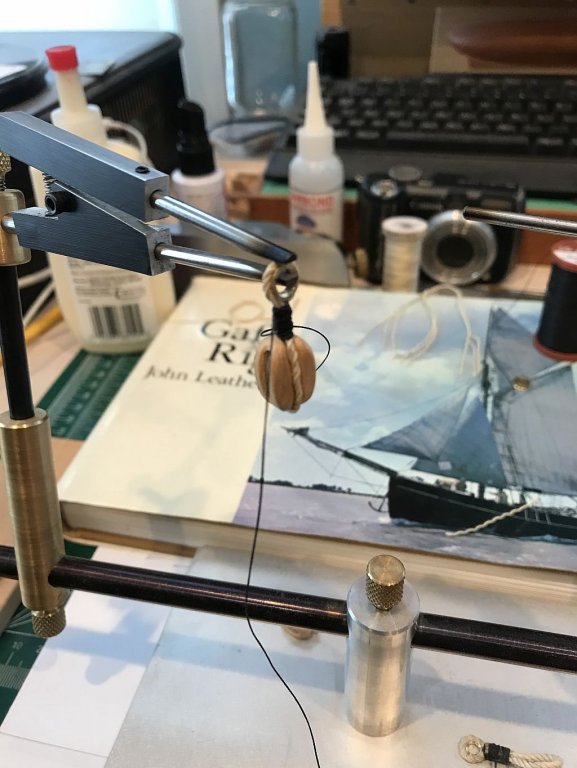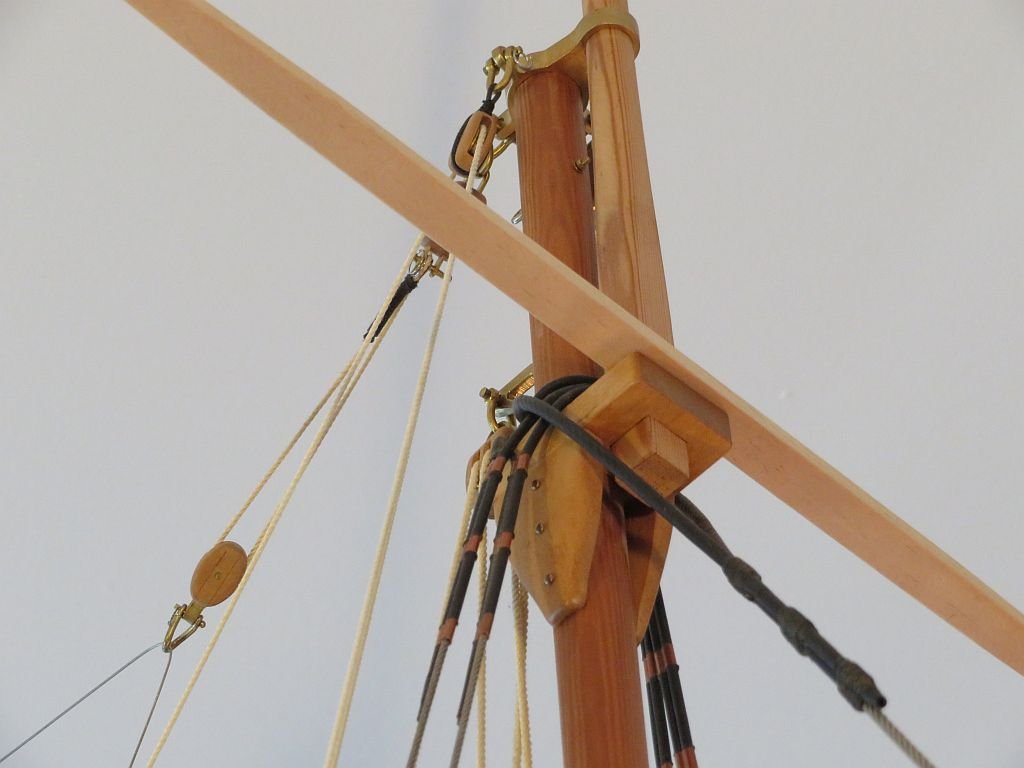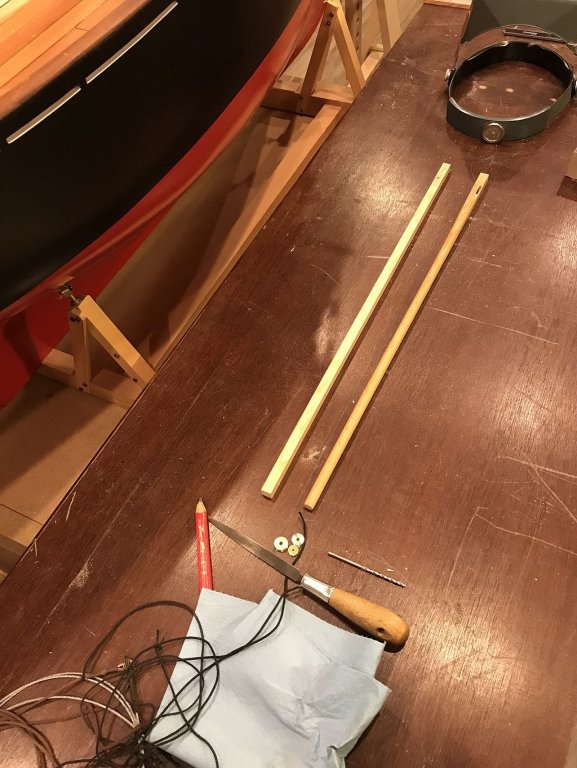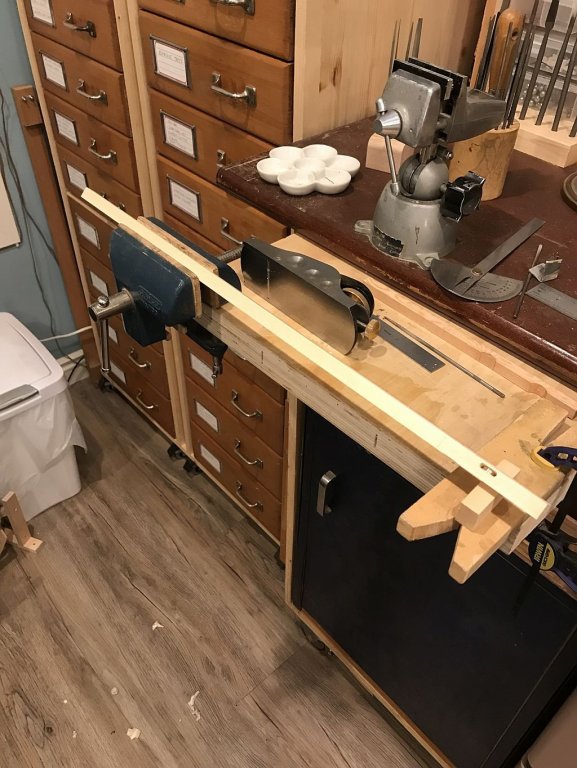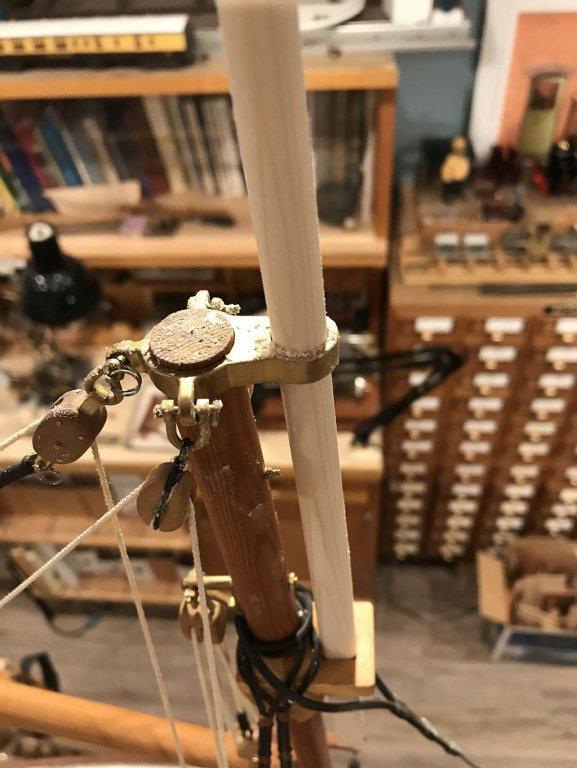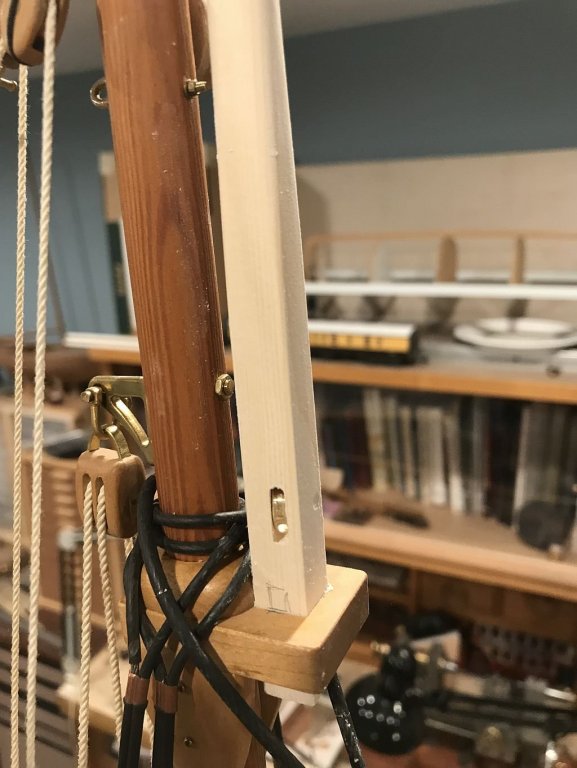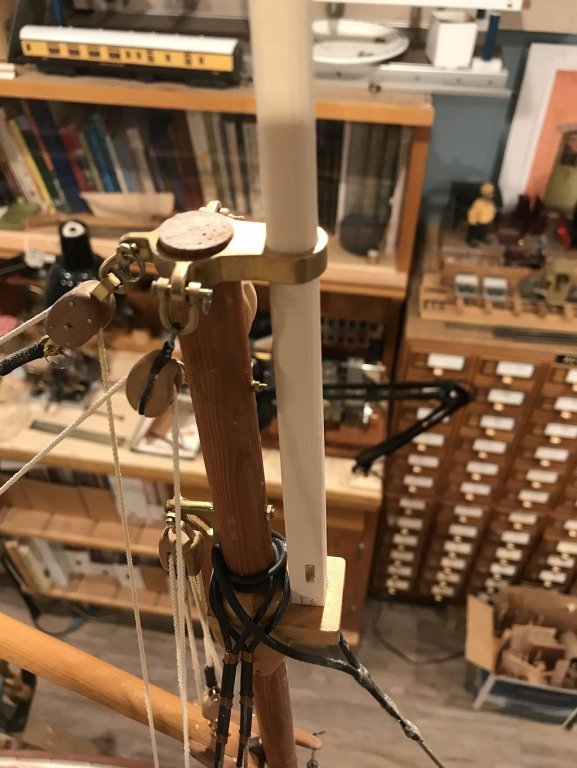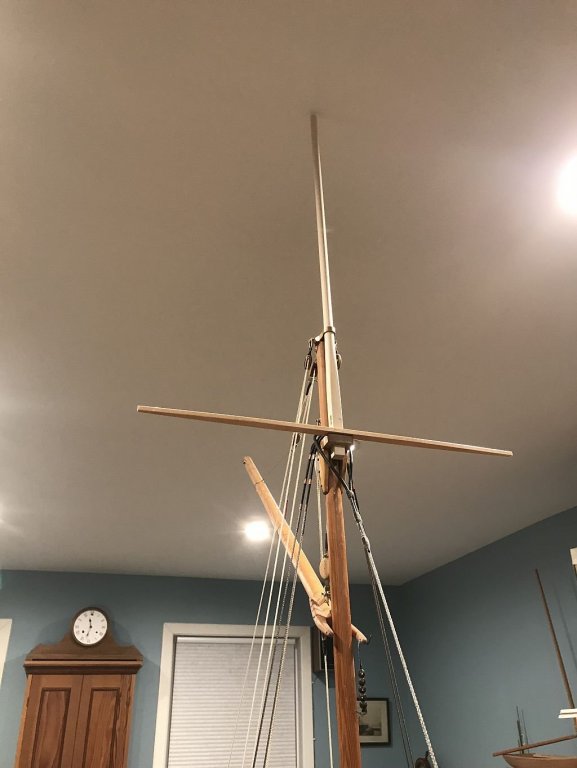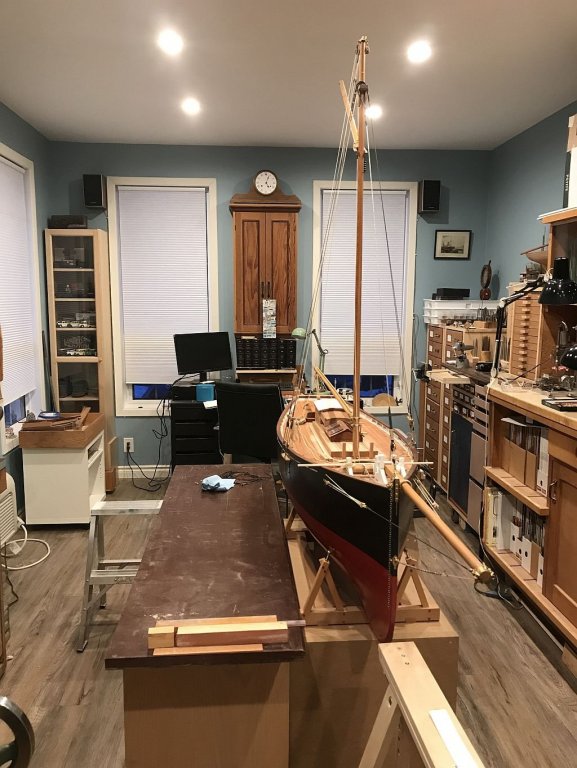-
Posts
5,195 -
Joined
-
Last visited
Content Type
Profiles
Forums
Gallery
Events
Everything posted by michael mott
-
Congratulations of getting the model into its case Nils you have done a masterful job of the display. Michael
- 692 replies
-
- eagle of algier
- chebec
-
(and 2 more)
Tagged with:
-
Tim I have spent countless hours pouring over just about every detail of "Integrity" it is a beautifully conceived yacht. and to answer you question about the model I will probably give it away eventually. Thanks Druxey, I really did not want to go through the motions of making a fourth topmast. Kees thanks for you kind words Ab thanks for your words and yes the details are for me, the most fun and challenging part. It again reminds me of Remco's byline that I'm paraphrasing if one treats every part as a model in its own right one will get there eventually. Steve yes this will be a great experience hopefully a lot of fun too. Thanks Dowmer I was just too tired to remember last light. I also forgot to add the pictures of the new pin rail that is almost complete. it is made from fir and i was able to get one more pin in by just squeezing them a 1/2 inch closer together. Scale that is of course. I will put a small brass cap on the tops of the uprights and round off the center part of the extensions that come through the rail. Michael
- 2,207 replies
-
Thanks for all the likes and fine comments More work on the topmast today. first i needed to make the small strop for the shrouds at the top. the first part was to make a ring by unwinding some rope making a length of about 8 1/2 inches long then recoiling itself into a ring. Once the ring was formed then the thimbles were placed on some new arms for the third hand. and then some "whipping" can't think of the proper term at this time of the night. Then the top of the topmast was ready for the "harness" notice the line just below the harness, the result of the error of cutting the slot for the top sheave at 90 degrees to where it should have been cut. I slipped the topmast through the headstock of the Myford after several wraps of masking tape to protect the wood, and cut a rebate about 1/8th inch wide down to 5/32 diameter then cut off the top with the jewelers saw. then bored a shallow hole the same diameter. coated both parts with a thin film of ACC once that had set I pushed the parts together with the sheave fore and aft then gave another shot of ACC to fix it in place. The shackles are different the small one is new today and the longer one from the bin of shackles. Once the shrouds were connected, I hoisted the mast again, and laid them over the ends of the spreader to get the position of the lower tackle. Tomorrow I shall finish the ends or the spreader. Michael
- 2,207 replies
-
Igor that looks wonderful! If you have too many of these small models and they are filling up your display space you can always send it to me, I would send you my address if you need it. Please! Michael
- 185 replies
-
- jolie brise
- pilot cutter
-
(and 2 more)
Tagged with:
-
This surprised me, I really had no idea how complex these masts are. incidentally I have re ordered a copy of Longridge's book the anatomy of Nelson's Ship, somehow my original copy has gone AWOL. Ed I am just amazed by how much detail you are putting into this model at such a small scale, it is a masterpiece for sure. Michael
- 3,618 replies
-
- young america
- clipper
-
(and 1 more)
Tagged with:
-
Thanks for all the kind remarks. I made a short video of the topmast being hoisted. I spent a long time getting the topmast to hoist up properly which also included making a couple of sheaves that are attached to the mast. The following sequence should be self explanatory. Michael
- 2,207 replies
-
Thanks for all the visits and likes they are appreciated. Mark, Steve answered your question for me. The one thing I do have to do to finish the topmast shape, is to make the transition from the square section to the round section much more abrupt, at the moment it is too long and the rope binds there only needs to be a short section where the rope lays in a groove to prevent the square section from binding. Needing some more blocks and working at different ways to produce a block that will be easy to make and economical in terms of time and materials. It is fun to explore new styles and ways of doing things. back in 2013 I made some blocks this way. using some 1/8" x .025" strip if my memory serves me correctly. The wood was maple and the sheave about 3/8ths diameter. I had been looking at the pictures in this catalogue under these blocks. and at the time I had not sorted out how to achieve the metal rounded top on them. Fast forward to this week, and having looked at all sorts of wonderful work of rigging parts by Ed Tosti, who uses copper for many of his fittings. I woke up with the idea that maybe I could use copper for this rounded top instead of brass. So I took some heavy copper wire approx 1/16th diameter and annealed it, then flattened each end. this looked promising. I cut a few more lengths and flattened the ends leaving approx 1/2" in the middle that was still round This time I flattened the ends in a single squash but needed to anneal it a few times to get it thin enough .020" the next picture shows the sequence to make these new blocks this time the wood is South American boxwood or Castello I cut some strips that were 5/8" wide by 3/32" thick then I stripped off a 1/8" strip from it. the wide section had a 1/8th x .025" trough cut down the center. they are just visible on the left side. Beginning on the right side 1) wood blanks cut from the strips, sheave cut from 3/8 brass rod bored out to .054", and flattened copper. 2) the wood has been glued together with Tightbond III glue, the copper as been folded by hand around a 3/32" steel rod. 3) the copper was pinched in the vice with a slab of 3/32" brass filler between the flattened ends and the 3/32" steel rod as the guide for depth. 4) the copper was slipped into the slots in the assembled block, and then drilled through with a .046" bit this hole was then opened up gradually with the tapered reamer which was held in a small three jaw chuck to save my fingers from getting blistered from twisting the small knurled handle of the reamer. 5) after the hole was drilled the copper was pulled out again and the elipse template was used to draw the shape of the block, which was then cut out with the jewelers saw. 6 is the final block after using a holder to sand and shape the individual blocks. This is the small holder made from the same stock thickness as the layers of the block. And finally three of the blocks they are not identical and I am OK with that as I make more they will become more consistent. Michael
- 2,207 replies
-
I like the way you have slotted the deck pieces. Michael
- 65 replies
-
- fish hooker
- fishing
-
(and 2 more)
Tagged with:
-

Getting Back Into The Hobby After 45+ Years
michael mott replied to Tom in NC's topic in New member Introductions
Welcome back to the world of modelbuilding Tom, I look forward to seeing your future models. Michael -
glad I'm not having to get paid for this, I would be working for nothing. I have spent almost two days mucking about with making strops and thimbles for a block or two to hoist the topmast I will need to do a bunch more work on the main mast to fit sheaves and fittings for attaching blocks. I will also need to do some more shaping so that the rope doesn't bind when going through the bolster fitting. The thimbe in the rope was spiced some time ago so I did not have to do it. the rope and shackles are temporary so that i can sort out the shape and where to lay the fall. Michael
- 2,207 replies
-
Thanks Nils that does make sense. Incidentally I ordered the book that Jurgen Willing referred to in the description of the build. Michael
- 692 replies
-
- eagle of algier
- chebec
-
(and 2 more)
Tagged with:
-
I worked on the topmast today and that led to reading up on the topmast shrouds and so a cross tree was made out of some fine grained Pine. the first picture shows the new spreaders for the topmast shrouds. When I machined the hole for the bottom sheave to set up the hoisting rig I did not get the hole right, it was too long ans off centre so I cut a new stick and decided to cut in the sheave slot before shaping it. screw up #2 I made the slot the same length. I embarked on stick #3 this one from some really nice clear spruce I got the bottom sheave done correctly and then started to shape the topmast. Using the drafting template for roundness once i got close to the diameter I needed, I began the task of final fitting in order to reach I rolled over the other bench as a platform to stand on. This made the fitting easier. The topmast has to rise up high enough for the sheave to clear the bolster and leave enough room for the fid. There were a lot of fitting trials befor the sheave cleared. and I seemed to have a problem nearing the finish, then it occurred to me that I was hitting the ceiling because I had left the topmast a little longer. One i removed about 1/2 inch from the top I was able to hoist the mast high enough. Feels a bit precarious working up so high. and an overall shot of the days work. That's all for now Michael
- 2,207 replies
-
Nils I looked up your picture and have some questions about the model in one of the pictures there appears to be a large spar hung on the mast in front of the spreaders is this a spinnaker pole? Michael
- 692 replies
-
- eagle of algier
- chebec
-
(and 2 more)
Tagged with:
-
Dick my first visit, this looks very interesting. What wood are you using? If you already mentioned it my apologies for missing it. Michael
- 263 replies
-
- nave tonda
- round ship
-
(and 2 more)
Tagged with:
-
Good morning Nils, I just finished catching up with your model. Again you have shown a wonderful rendition of your subject that is alive with character and demonstrated skills. I shall have to try your sailmaking methods, I thought the bolt rope method was very clever. Congratulations on the completion. You mentioned some time ago that one of your favourite boats was the cutter Genesta, it would be nice to follow you build it, but you probably already have the next one sorted. Michael
- 692 replies
-
- eagle of algier
- chebec
-
(and 2 more)
Tagged with:
-

Sharpie by Jim T - Scale 1:16 - SMALL
michael mott replied to Jim T's topic in - Build logs for subjects built 1851 - 1900
Very nicely done Jim, are the plaks lapped at all or are they butted only? I could not tell from the pictures. Michael -
Mark it is interesting that we end up in some areas of our model work trying to replicate the same methods in general terms vis a vis the woodwork and framing albeit substituting fine grain woods, and then when it comes to the elements that were cast in real life we change and struggle with keeping them all the same using a machining process. I wonder if what Druxey did was actually faster in the long run and more closely representing the original design and possibly also less expensive. I am not being critical, just an observation. I often fine myself sort of locked into trying to make the next item the same way rather than changing to a different method sort of an automatic pilot mindset. Lovely work on the ship, by the way. Michael
-

Dennis Bus by Mike Dowling - FINISHED - OcCre
michael mott replied to Mike Dowling's topic in Non-ship/categorised builds
Nice looking model Mike, I have a paper model of the same bus, still in the flat form. Michael -
Rob I will put something together. Druxey no it is 30mm to the foot scale which makes 45mm(1 3/4") gauge the equivalent of 18" gauge at 1:1. Michael
- 2,207 replies
-
Ed I am simply lost for words regarding the work you are doing to show all of this rigging, I am not sure that Longridge went this far, and if he did then he would be smiling I'm convinced. Michael
- 3,618 replies
-
- young america
- clipper
-
(and 1 more)
Tagged with:
About us
Modelshipworld - Advancing Ship Modeling through Research
SSL Secured
Your security is important for us so this Website is SSL-Secured
NRG Mailing Address
Nautical Research Guild
237 South Lincoln Street
Westmont IL, 60559-1917
Model Ship World ® and the MSW logo are Registered Trademarks, and belong to the Nautical Research Guild (United States Patent and Trademark Office: No. 6,929,264 & No. 6,929,274, registered Dec. 20, 2022)
Helpful Links
About the NRG
If you enjoy building ship models that are historically accurate as well as beautiful, then The Nautical Research Guild (NRG) is just right for you.
The Guild is a non-profit educational organization whose mission is to “Advance Ship Modeling Through Research”. We provide support to our members in their efforts to raise the quality of their model ships.
The Nautical Research Guild has published our world-renowned quarterly magazine, The Nautical Research Journal, since 1955. The pages of the Journal are full of articles by accomplished ship modelers who show you how they create those exquisite details on their models, and by maritime historians who show you the correct details to build. The Journal is available in both print and digital editions. Go to the NRG web site (www.thenrg.org) to download a complimentary digital copy of the Journal. The NRG also publishes plan sets, books and compilations of back issues of the Journal and the former Ships in Scale and Model Ship Builder magazines.



